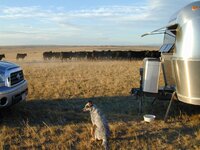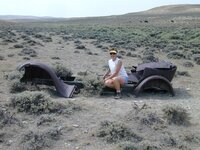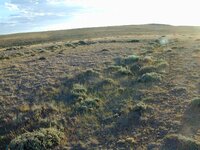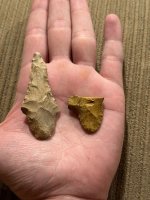I was around using the strings of 9volt battery detectors in the early 1970's. Sometimes you had to give batteries the "tongue test" when battery life was short, the findings were plenty and batteries were in short supply. Those water proof heads with a bit of sealant around the cable produced rings and coins from the old swimming beaches, now condemned as being too contaminated for "proper people". Well, the great hunting days had to come to and end, and they did by the 1980's. My Compass and Garrett detectors hung in there until the best pickings were... picked... so I sold them and did not look back.
Several years ago I finally broke down to look at what detectors were available and this time, was ready to buy one. Imagine my surprise at the variety of specialized detectors now available, and not $199.00 but $1,999 and down. Some even more! Whoa... I needed to check out a few. The Whites MXT did everything I needed for a detector. It had features that I probably would not use for the purpose they were designed, but I figured out how to work one against the other. And I have done just that. I took a mid priced detector and made it an all in one.
I am a geologist by schooling. Gold, sapphires, agates, fossils and anything else that lays on or below the surface is my territory. Many hunters of gold do not realize that the majority of gold to be found in the Rockies is "flour gold". You start digging and pulling out boulders to get to the "grit" weighing in at 185 pounds and leave that early evening down to a stick figure that the wind could blow over. Gold in the bottle after 9 hours of back breaking work... $3, maybe $5 worth. The gold detectors are of no value to me, unless I was in Alaska in the bush country where there is GOLD worth detecting. The work is not any easier, but the rewards can be big! Of course, the cost of getting there and back, food, lodging by tent or under a tree... expensive anyway you look at it. So the MXT was more detector than I needed and more.
We were camping on a Ranch in Wyoming when I began to find square nails... not just a couple on the surface, but it started out as a few, then dozens then a hundred or more in one area. Square nails out in nowhere. I asked the rancher if it was OK to use my detector to see what was up with the square nails. He thought I crazy and I thought that myself, but what a way to break in a new detector.
At first the iron was so plentiful that you could go detectorocrazy and just quit... but this was a 19th century camp site of some sort. It did not take long to discover that what I was looking at was a Union Pacific Rail Road camp from the post 1866 Hell On Wheels track builders going from Omaha, Nebraska to California. And... not far... the current Union Pacific Rail Road tracks! B.i.n.g.o. This must have been where they were unloading crates, breaking them down and then kegs of square nails, supplies, tent gear, horse tack and of course, personal items dropped and misplaced by the workers.
The first day was a bit over whelming as I needed to sort out the iron from non iron. Although, when you are hunting acres and acres... anything was of interest... since the youngest material would be nearly 150 years OLD to begin with, you would check it out. No pull tabs. Bottle caps. Aluminum gum wrappers. All and anything was OLD JUNK at the worse, but how to cherry pick the miles of never detected sites?
The Whites MXT video was not very helpful in that aspect. I watched it a few times to get a basic idea of the new way of moving the head around and "estimating" where something might be laying beneath the surface. Not like the Compass or Garrett detectors where you could pin point and then probe. But with several days I found the secret... I would move from Relic mode to Coin mode.
Relic gave two major tones. One for Iron. Another for not... Iron. Eventually by watching the screen, I could approximate WHAT might be beneath the surface. So I would hit a high pitch, non Iron... go to coin in the event it was copper, silver or gold before the probing beneath the surface. Several items that would really get you wondering "where is this" was tin and lead. You would think it was moving around beneath the surface. Brass stayed put. Some stuff just was difficult to pin point. But brass and coins were easy to find. If it was "moving around" tin, lead or ferrous items too small to get a low tone, but enough there to change tones on different sweeps. But... I watched the bar graph, went from relic to coin shooting and figured it out. Frustrating at first... put paid off.
I have square nails, rail road spikes (not the gold one from Utah, but the same size and... iron), pins to hold each rail car together, parts of lanterns saying Union Pacific, old soldered cans stomped on like pancakes... so probably military, military buttons, coins, keys, Henry cartridges, Winchester, Sharps, lead bullets... even one beer bottle that was not smashed to pieces that must have been stuck into a prairie dog hole in the 1860's. The MXT has done a great job for what I needed it for... to find stuff.
Coins... check the bar graph and number for a dig or not dig item. Iron... the large items can be two or more feet down... and could be a large rail plate or broken spike puller or UPRR shovel that was broken while digging grade. The battery life is very good.
For those of you who say there are no places left to hunt. The western Rail Roads have hundreds if not thousands of 19th century camp sites. They buried their trash and lost some spare change. From Nebraska to Provo, Utah to Sacramento, California where the East and West met, the junk is in no shortage. The trees are far and few and most is just sitting on the surface waiting to be discovered! Wyoming, Utah, and Nevada... come and explore.
FIRST thing you need to do to become Western Trash Smart... study the soldering of tin cans of the era. When you see an 1860's era can for the first time... you will be on your way to find the camp sites in the West. Is it worth it? Well, for the amount of time and effort... really no. But for the hunt and the possibility of finding something of value... you bet. When the snow quits blowing this winter, we will be back out and be surrounded by sage, cattle and dust from a cattle truck running cattle from one pasture to another. You cannot put a value on that, even if you come back with only dead batteries... it was well worth the... hunt.
Several years ago I finally broke down to look at what detectors were available and this time, was ready to buy one. Imagine my surprise at the variety of specialized detectors now available, and not $199.00 but $1,999 and down. Some even more! Whoa... I needed to check out a few. The Whites MXT did everything I needed for a detector. It had features that I probably would not use for the purpose they were designed, but I figured out how to work one against the other. And I have done just that. I took a mid priced detector and made it an all in one.
I am a geologist by schooling. Gold, sapphires, agates, fossils and anything else that lays on or below the surface is my territory. Many hunters of gold do not realize that the majority of gold to be found in the Rockies is "flour gold". You start digging and pulling out boulders to get to the "grit" weighing in at 185 pounds and leave that early evening down to a stick figure that the wind could blow over. Gold in the bottle after 9 hours of back breaking work... $3, maybe $5 worth. The gold detectors are of no value to me, unless I was in Alaska in the bush country where there is GOLD worth detecting. The work is not any easier, but the rewards can be big! Of course, the cost of getting there and back, food, lodging by tent or under a tree... expensive anyway you look at it. So the MXT was more detector than I needed and more.
We were camping on a Ranch in Wyoming when I began to find square nails... not just a couple on the surface, but it started out as a few, then dozens then a hundred or more in one area. Square nails out in nowhere. I asked the rancher if it was OK to use my detector to see what was up with the square nails. He thought I crazy and I thought that myself, but what a way to break in a new detector.
At first the iron was so plentiful that you could go detectorocrazy and just quit... but this was a 19th century camp site of some sort. It did not take long to discover that what I was looking at was a Union Pacific Rail Road camp from the post 1866 Hell On Wheels track builders going from Omaha, Nebraska to California. And... not far... the current Union Pacific Rail Road tracks! B.i.n.g.o. This must have been where they were unloading crates, breaking them down and then kegs of square nails, supplies, tent gear, horse tack and of course, personal items dropped and misplaced by the workers.
The first day was a bit over whelming as I needed to sort out the iron from non iron. Although, when you are hunting acres and acres... anything was of interest... since the youngest material would be nearly 150 years OLD to begin with, you would check it out. No pull tabs. Bottle caps. Aluminum gum wrappers. All and anything was OLD JUNK at the worse, but how to cherry pick the miles of never detected sites?
The Whites MXT video was not very helpful in that aspect. I watched it a few times to get a basic idea of the new way of moving the head around and "estimating" where something might be laying beneath the surface. Not like the Compass or Garrett detectors where you could pin point and then probe. But with several days I found the secret... I would move from Relic mode to Coin mode.
Relic gave two major tones. One for Iron. Another for not... Iron. Eventually by watching the screen, I could approximate WHAT might be beneath the surface. So I would hit a high pitch, non Iron... go to coin in the event it was copper, silver or gold before the probing beneath the surface. Several items that would really get you wondering "where is this" was tin and lead. You would think it was moving around beneath the surface. Brass stayed put. Some stuff just was difficult to pin point. But brass and coins were easy to find. If it was "moving around" tin, lead or ferrous items too small to get a low tone, but enough there to change tones on different sweeps. But... I watched the bar graph, went from relic to coin shooting and figured it out. Frustrating at first... put paid off.
I have square nails, rail road spikes (not the gold one from Utah, but the same size and... iron), pins to hold each rail car together, parts of lanterns saying Union Pacific, old soldered cans stomped on like pancakes... so probably military, military buttons, coins, keys, Henry cartridges, Winchester, Sharps, lead bullets... even one beer bottle that was not smashed to pieces that must have been stuck into a prairie dog hole in the 1860's. The MXT has done a great job for what I needed it for... to find stuff.
Coins... check the bar graph and number for a dig or not dig item. Iron... the large items can be two or more feet down... and could be a large rail plate or broken spike puller or UPRR shovel that was broken while digging grade. The battery life is very good.
For those of you who say there are no places left to hunt. The western Rail Roads have hundreds if not thousands of 19th century camp sites. They buried their trash and lost some spare change. From Nebraska to Provo, Utah to Sacramento, California where the East and West met, the junk is in no shortage. The trees are far and few and most is just sitting on the surface waiting to be discovered! Wyoming, Utah, and Nevada... come and explore.
FIRST thing you need to do to become Western Trash Smart... study the soldering of tin cans of the era. When you see an 1860's era can for the first time... you will be on your way to find the camp sites in the West. Is it worth it? Well, for the amount of time and effort... really no. But for the hunt and the possibility of finding something of value... you bet. When the snow quits blowing this winter, we will be back out and be surrounded by sage, cattle and dust from a cattle truck running cattle from one pasture to another. You cannot put a value on that, even if you come back with only dead batteries... it was well worth the... hunt.
Amazon Forum Fav 👍
Attachments
Last edited:







